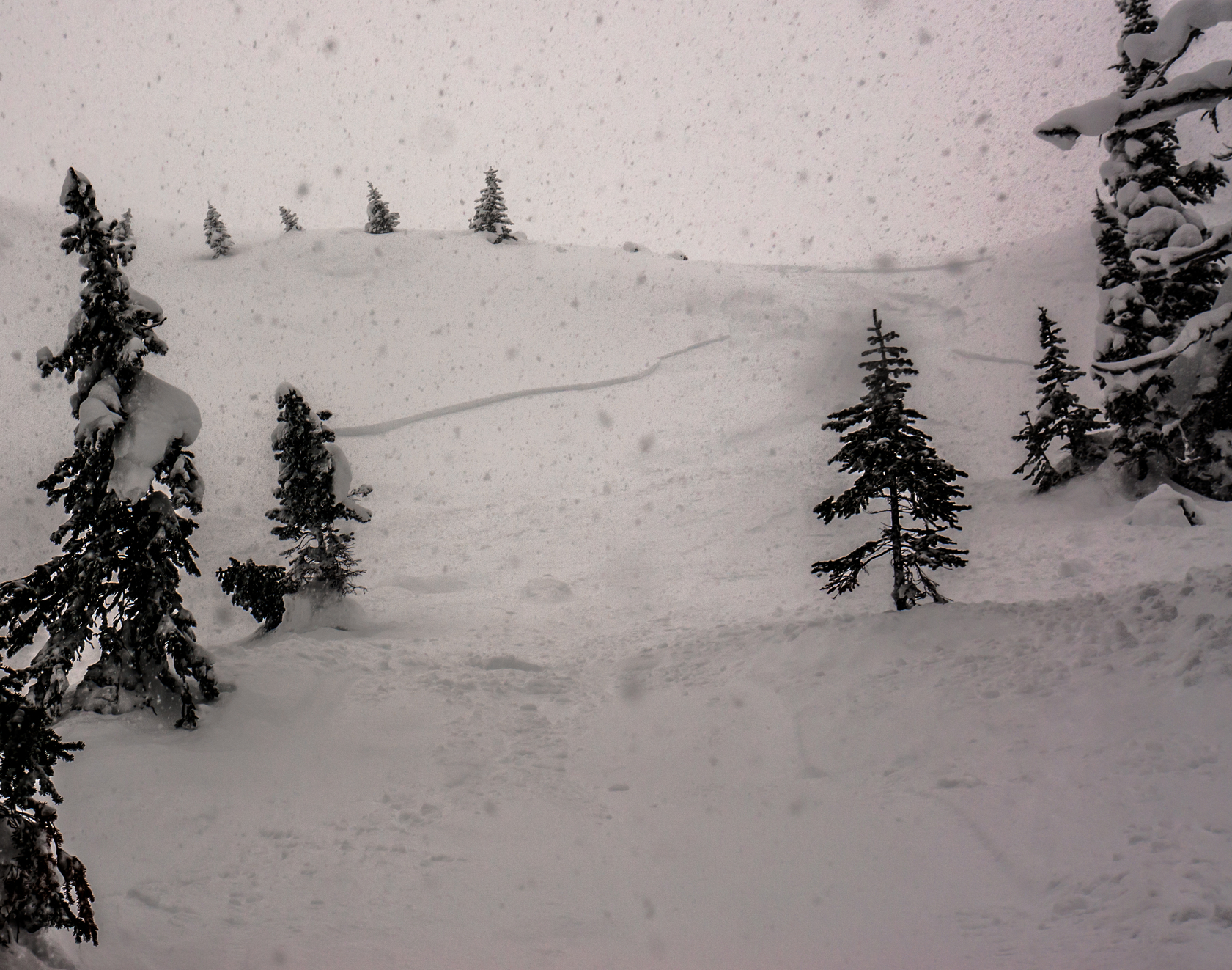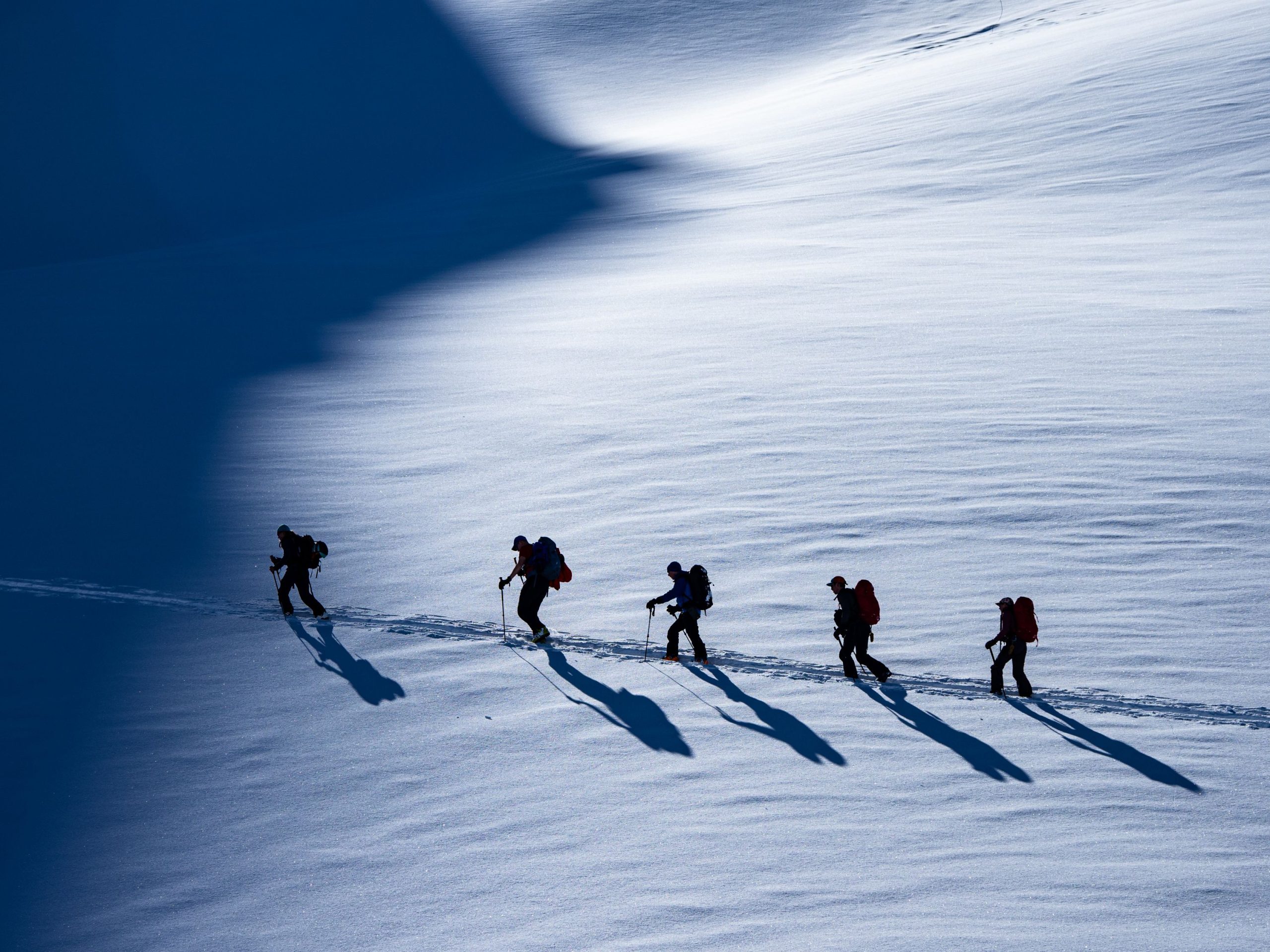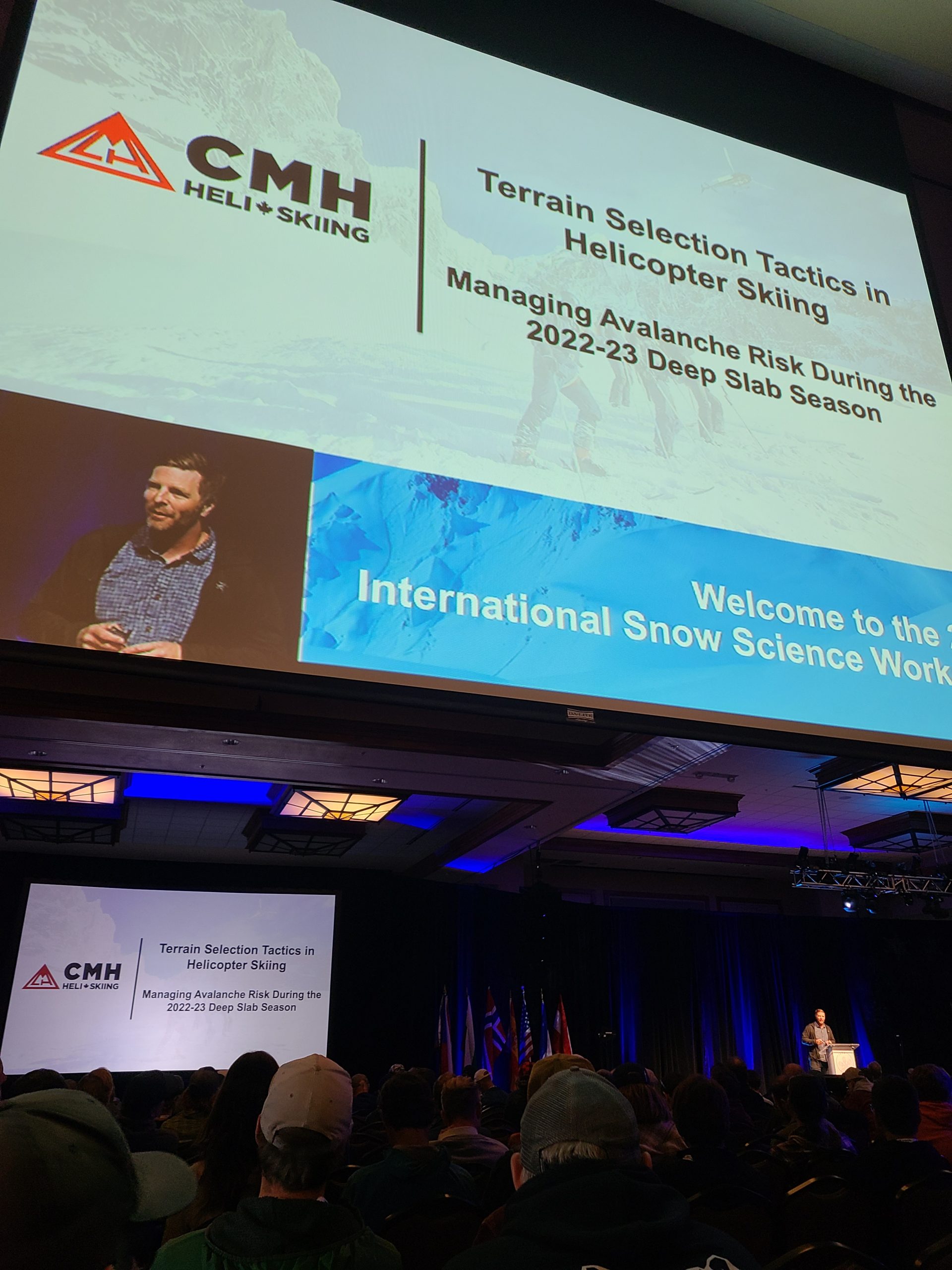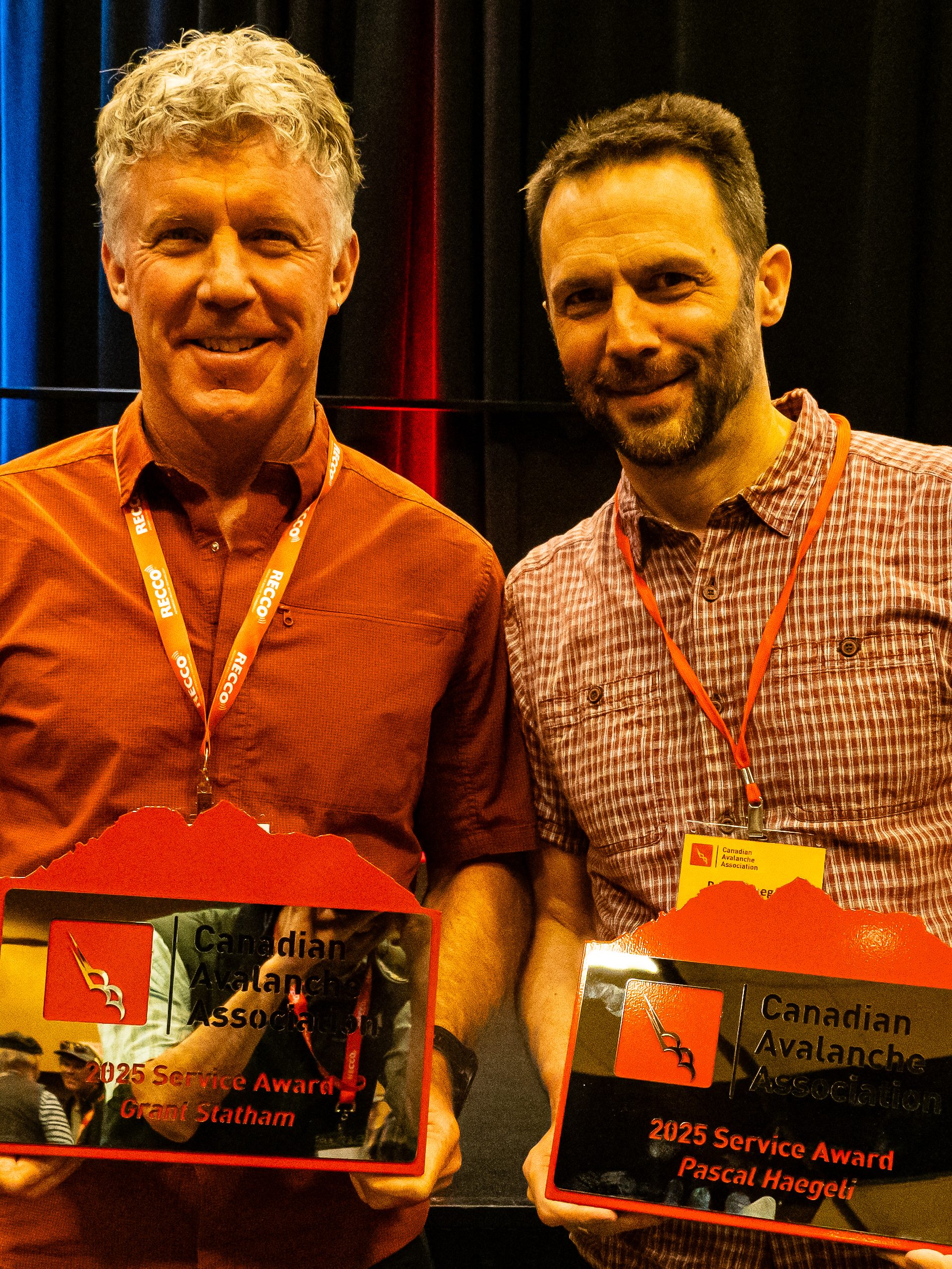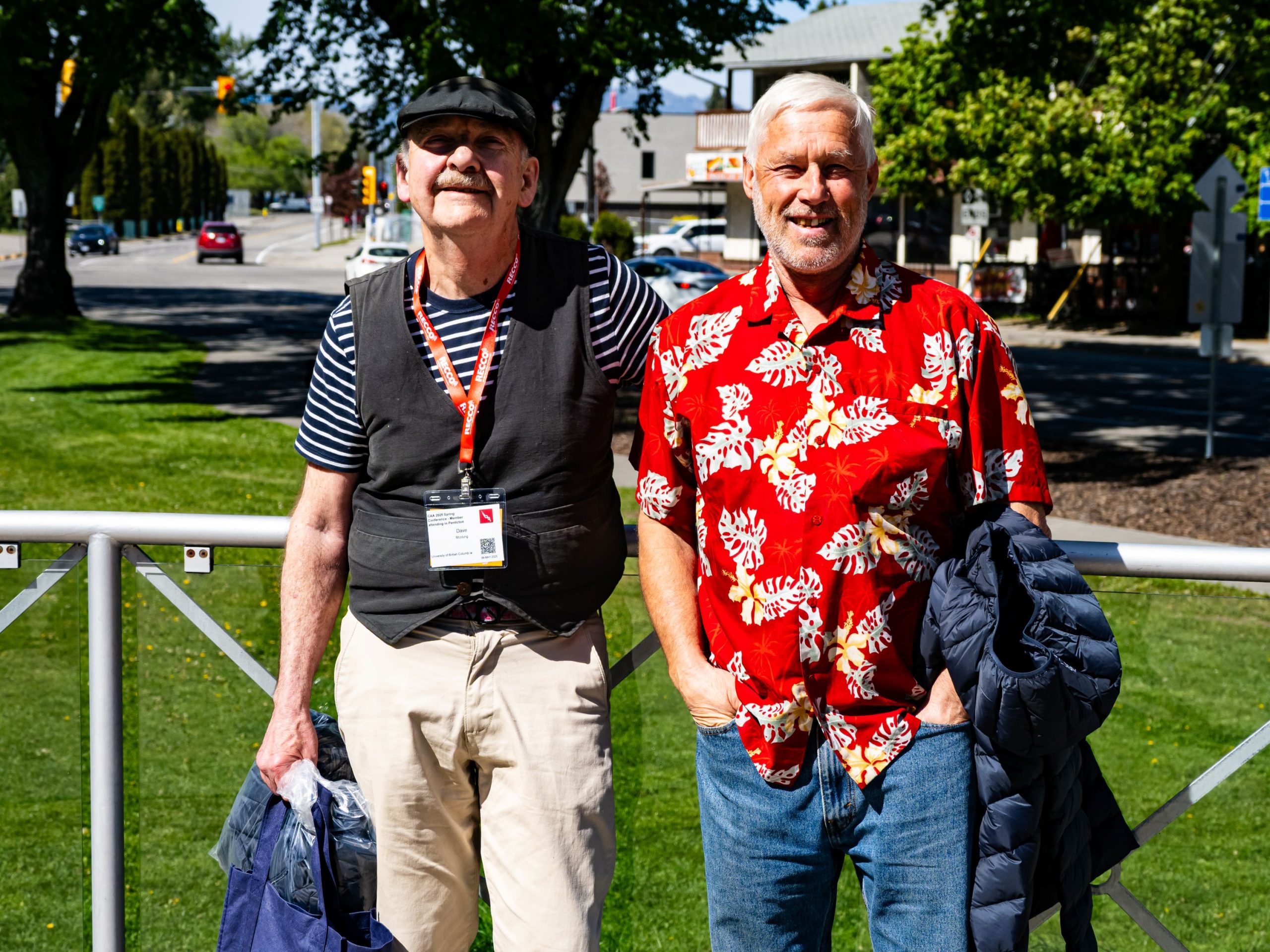This article originally appeared in The Avalanche Journal, Volume 123, Spring 2023
On April 17, 2019, three of the world’s leading alpinists—Jess Roskelley, David Lama, and Hansjörg Auer—successfully summited Howse
Peak at the edge of Banff National Park via the incredibly challenging M16 route. Tragically, the three of them were swept away in an
avalanche and killed on the descent. A recovery attempt wasn’t possible until three days later, on Apr. 20, when the weather cleared enough
to allow for a ground search. Canadian Avalanche Rescue Dog Association member Adam Sherriff and his dog Brooke were brought in to aid
in the search. This is their story of their part in this challenging recovery mission.
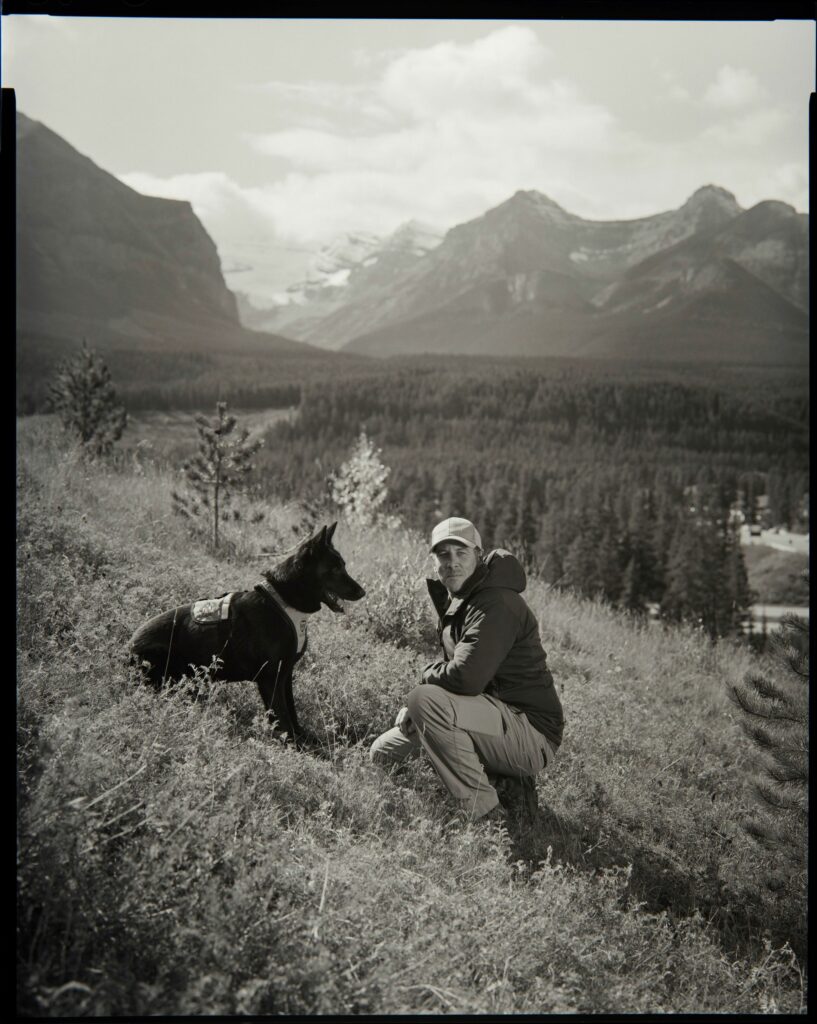
By Adam Sherriff
THE HOWSE PEAK ACCIDENT in April 2019 was a tragic event that resulted in a technical and high-profile recovery. As a dog handler, this mission put the years of training I had done with Brooke to the test. Although our part of this large-scale recovery was only 25 minutes long, it was some of the most challenging search conditions I have ever worked a dog in.
Brooke is an 11-year-old German shepherd from the Royal Canadian Mounted Police breeding program. She was raised by an RCMP member in the Lower Mainland before being released from the program and becoming available for purchase. I acquired Brooke in the spring of 2010 when she was just over one year old and immediately got to work with her. I spent that first summer getting to know Brooke and worked on creating a bond with her. She entered the Canadian Avalanche Rescue Dog Association (CARDA) training program the following fall, and by January 2012 we achieved team-in-training status with CARDA.
We validated as a CARDA dog team in January 2013 and the following spring we achieved our wilderness search validation. Since 2013, we have annually achieved our winter and summer validations. While working and training with Brooke, I completed my Avalanche Operations Level 2 and became a Professional Member with the Canadian Avalanche Association, a manager with Golden and District Search and Rescue (GADSAR), and an instructor with CARDA.
Over Brooke’s working career, we have responded to many avalanche calls and missing person reports throughout the Kootenays. I began Brooke’s helicopter training, including sling training, very early with GADSAR and after just a few rotations, helicopter work was not a stress for her but something she got excited about. The sound of the helicopter landing became a cue for work—and for Brooke work means
doing amazing things.
As a team, we were lucky enough to attend a few CARDA advanced training courses. These are designed to push teams beyond validation and introduce them to glaciated terrain, rappelling, advanced mountain travel, ski touring, and using alternate modes of travel (snow machine/helicopter) to access rescue sites. Having Brooke sling trained and familiar with working on rope were keys to her success at Howse Peak.
The Search
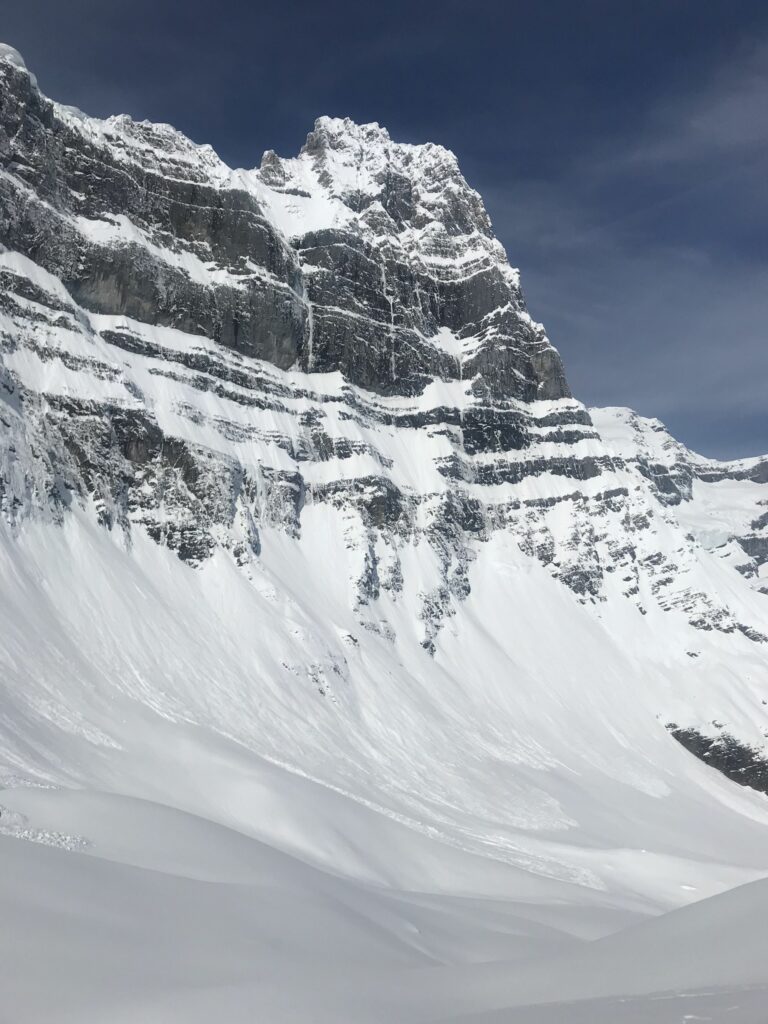
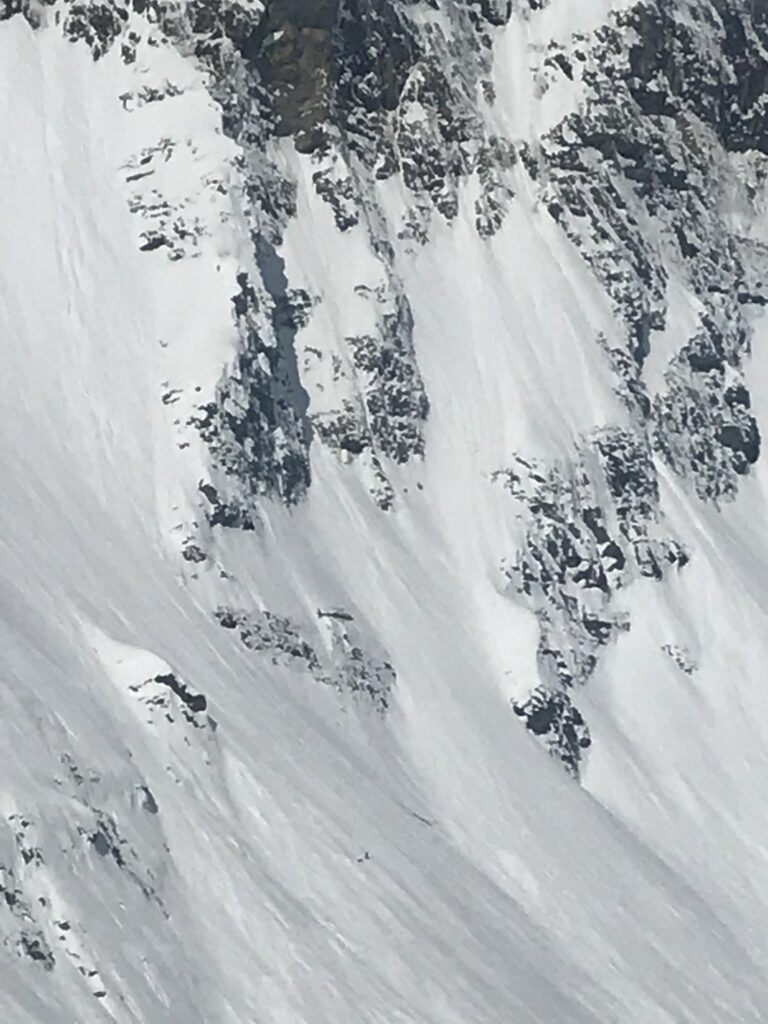
I was contacted by Parks Canada on April 17 requesting my availability to provide avalanche rescue dog support to the rescue team. That first day, I arrived at the highway staging area where I was able to only get an obscured view of the search site. Having trained with the mountain safety team previously, I was confident in my ability to provide support if our services were required. Over the next few days, I sat in on safety meetings and was included in all aspects of the planning leading up to the recovery attempt.
In order to reduce exposure to secondary avalanches, all recovery efforts were to be completed while rescuers were attached to a helicopter long-line. After discussing and working through the logistics of rigging and safety procedures, it was decided that I would work with Brooke on the site while she remained attached to my harness via a 30m line, and I would remain attached to the long-line. This search technique was something I had never attempted with Brooke, but her previous helicopter long-line training and her extensive on-rope search training made this task essentially a combination of previously learned skills put together in a new format. Having Brooke attached to my harness would allow me to control her search patterning, communicate with her through line tension. In the event of a secondary avalanche, it would allow me to extract her quickly from the search site.
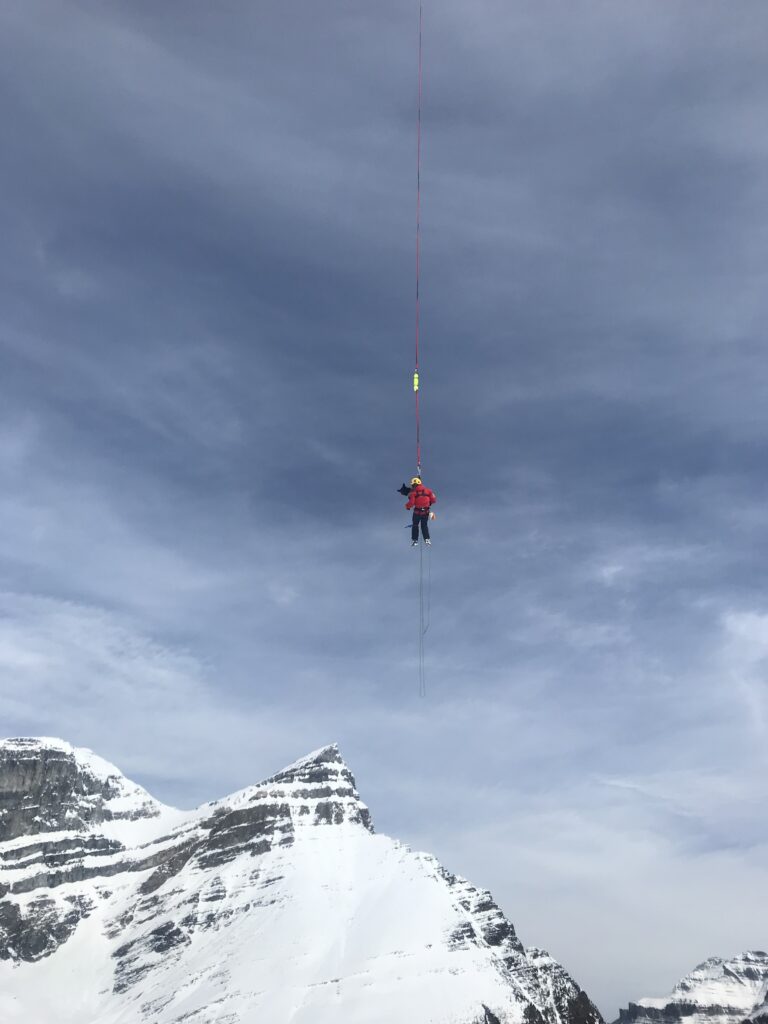
As I moved Brooke around the search site, Paul Mahoney, the skilled rescue pilot from Alpine Helicopters, followed in the air. In an attempt to reduce the amount of wind on the search site, we used a 45-metre long-line to increase the distance between the machine and the slope while we worked. Working under a helicopter while it hovered above us was a new distraction for Brooke. I could see her confusion when we first began to search, as she continued to look back to me for direction and confirmation of her task. Once we settled in, we found our rhythm as a team and began to efficiently cover off large portions of the search site. Working in those conditions was like searching in a tornado, with constantly changing winds and blowing snow. Brooke’s face was quickly covered in snow from continuous helicopter downwash.
My job as the handler quickly became a task of rope management. I had to maintain my line with the helicopter while ensuring Brooke’s line remained free of snags, allowing her the range she needed to cover ground. By utilizing her natural desire to range and search, I slowly worked my way downslope and allowed her to cover off 30 metres on each side of me as we searched the debris field. Although I did not communicate with Paul much while we searched, he was an essential part of the success of our mission. He was in sync with my movements on the ground and made rope management as easy as possible with exceptional flying.
The Find
At about 20 minutes into the search, we were nearing a high probability area. Brooke’s demeanour and pace quickly picked up and I could see she was in scent. It was so obvious that when Paul received our 20-minute check-in call, he asked for more time as he too could see that Brooke was trying to tell us something. Not long after that conversation, Brooke headed up hill full of determination. I radioed Paul and asked him to lift the weight bag off the ground so we could work back up slope.
As we moved back up, Brooke began pulling out line and was clearly working in a scent cone. She followed the scent to the source and started indicating by digging. She quickly got to work and dug down about 40cm, which exposed some clothing. Once I got to her location, I instantly praised her, placed three crossed wands, and signalled to Paul that we were ready for a lift back to staging. After confirming the location of the climbers, the rescue team returned to the site to begin the digging and recovery process. Once back at staging, I quickly moved to reward Brooke with a game of ball. She had no idea how big a find she has just accomplished. To her, searching is a game, and that game ends with play.
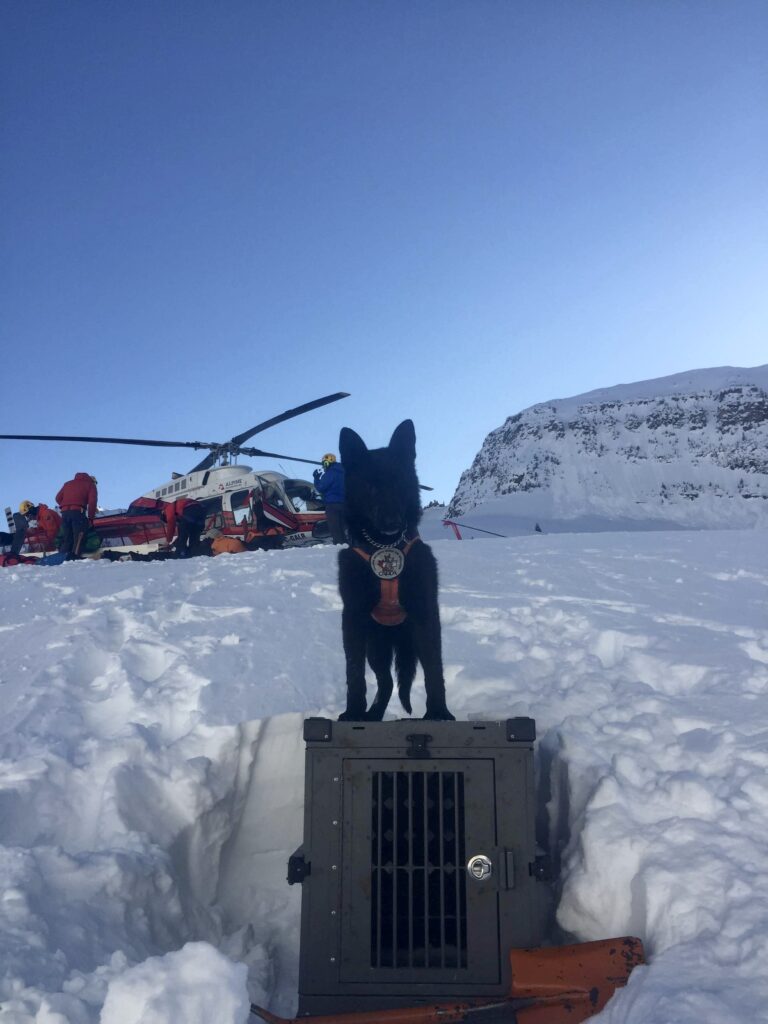
Conclusion
The Howse peak recovery was essentially a culmination of nine years of working together. It tested our communications system, our trust, and all our training. Some challenges we encountered included trying to cover the whole site with changing winds, communicating with Brooke with constant noise from above, and working through the pressure of such a complex search task.
I also believe it was important to be open to the team leaders about the fact we had never before attempted to search under a helicopter. It allowed us to work as a team to determine the best rigging setup and helped reduce the pressure of trying something new. As dog handlers, we must always remember to “trust your dog,” even in the face of great challenges.
I have never been so proud of Brooke as I was while we flew back to staging. During the search she showed confidence and a desire to do work that cannot be taught. Being able to combine all of our individual training sessions into a unique rescue tool was a rewarding success.


